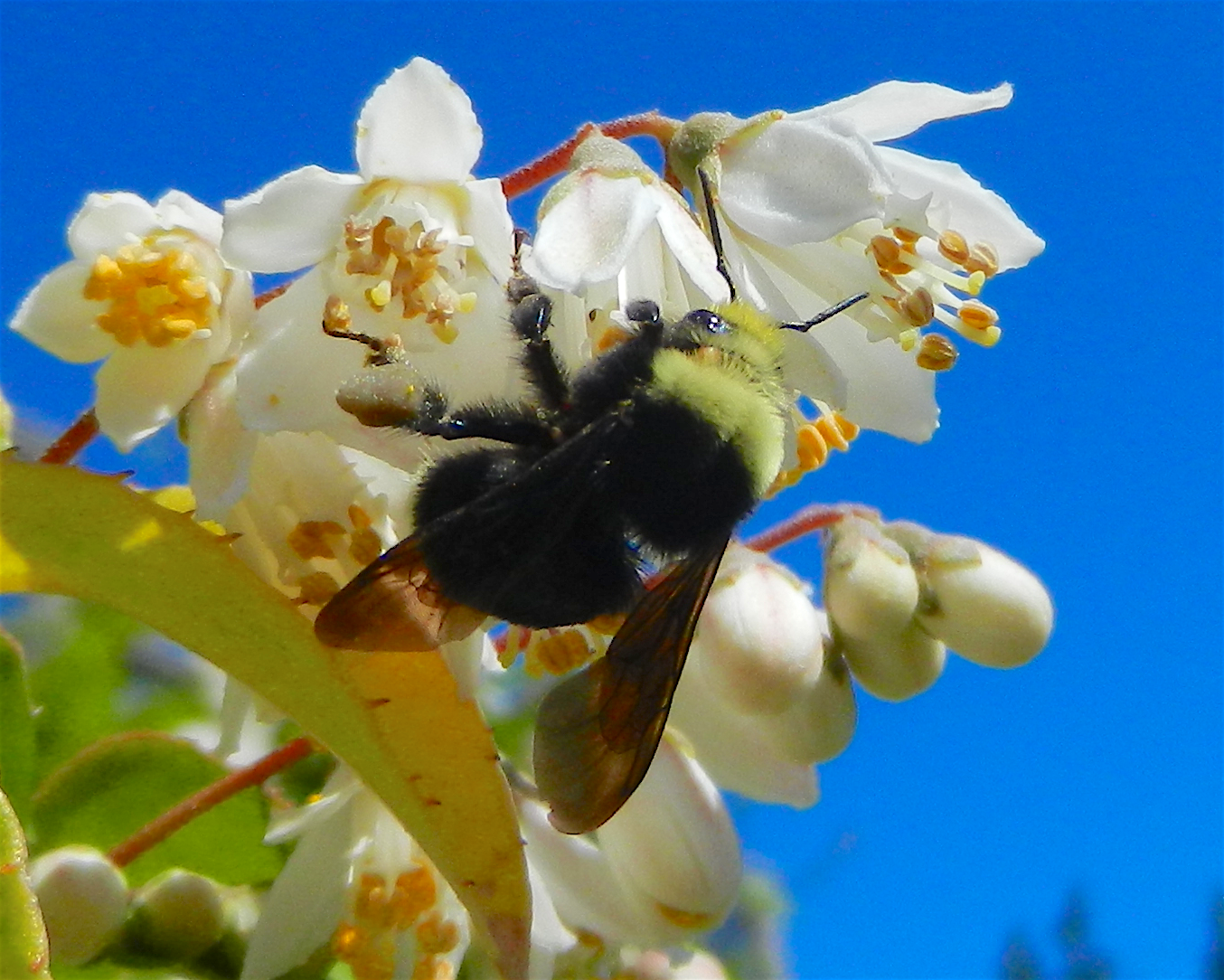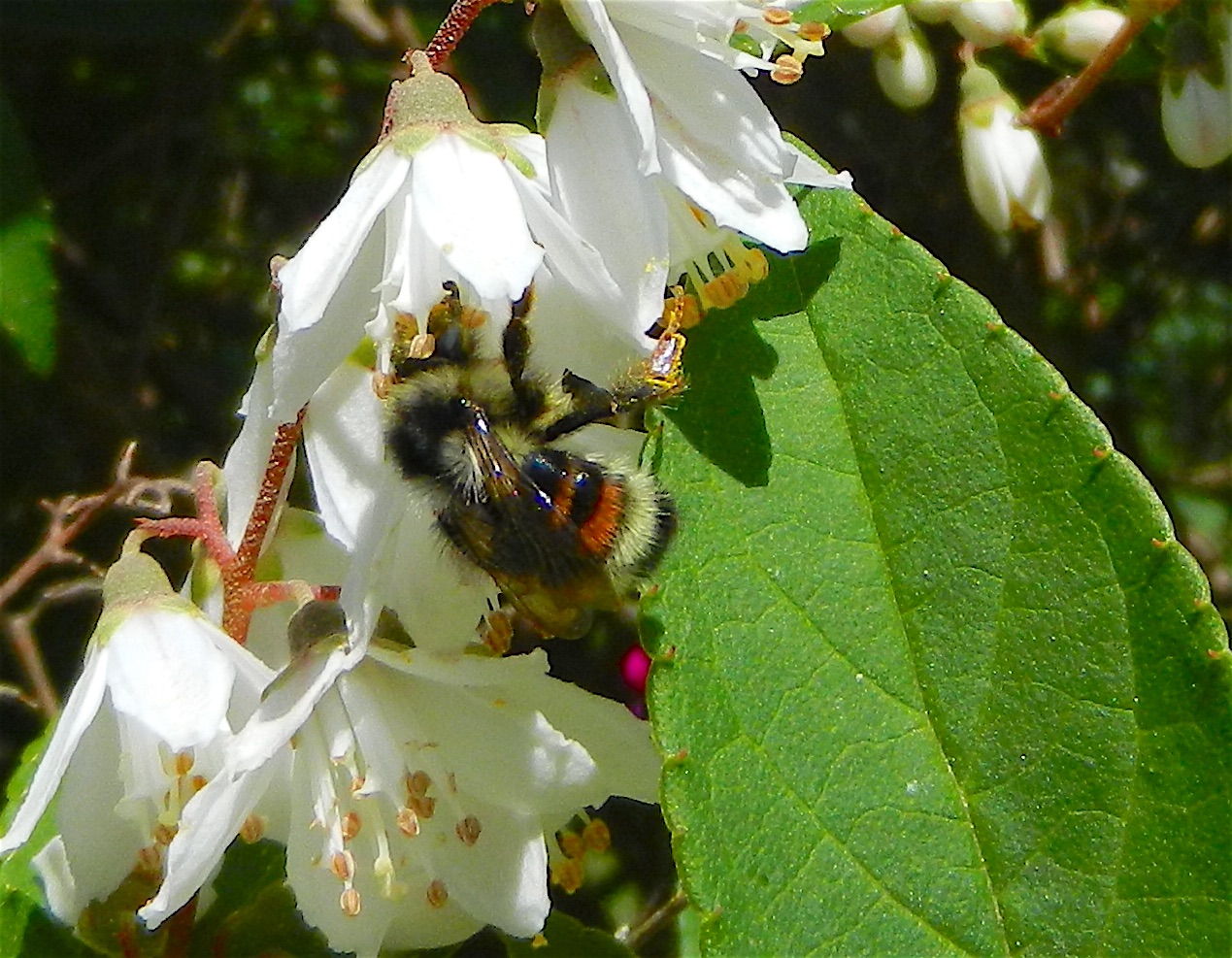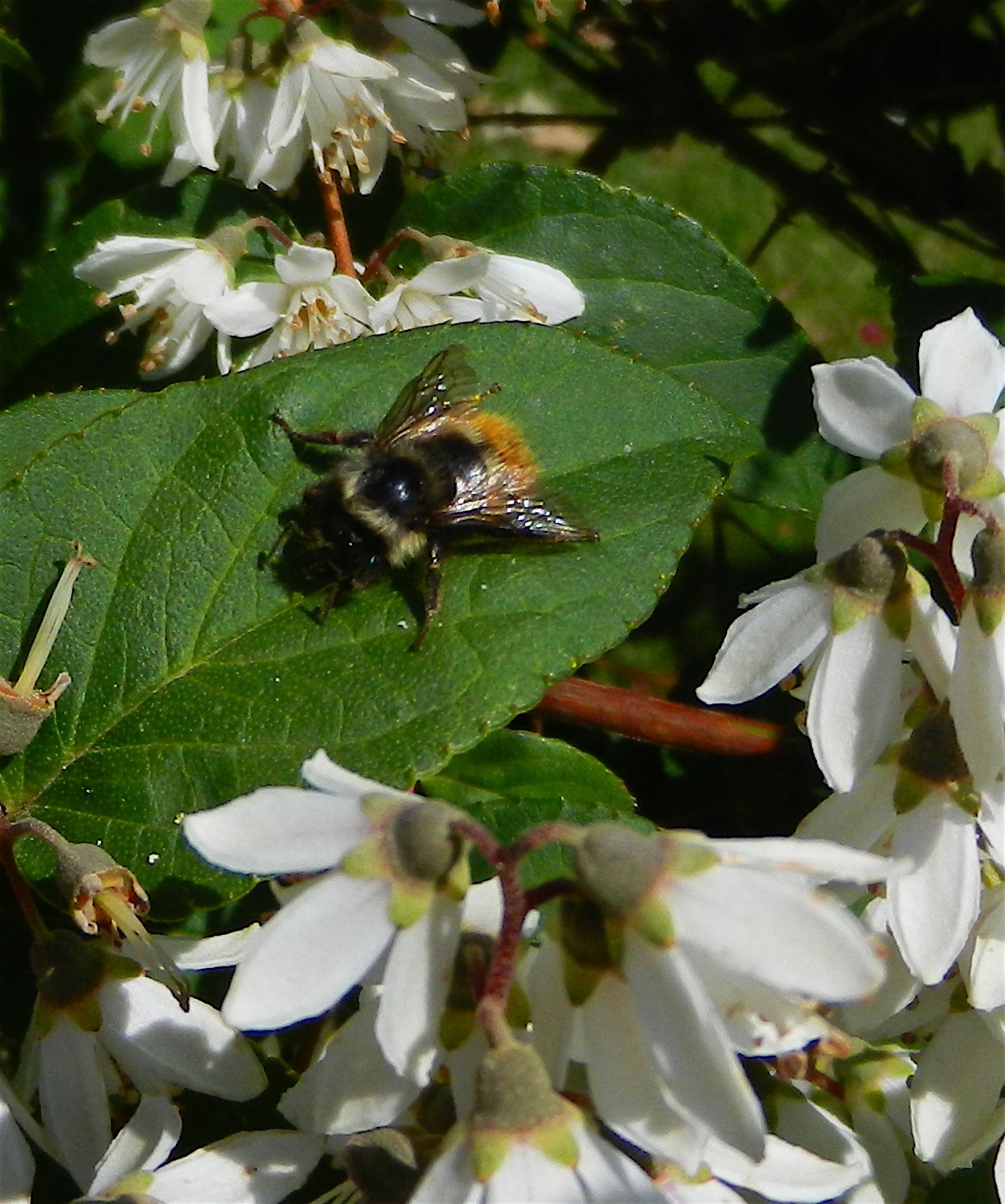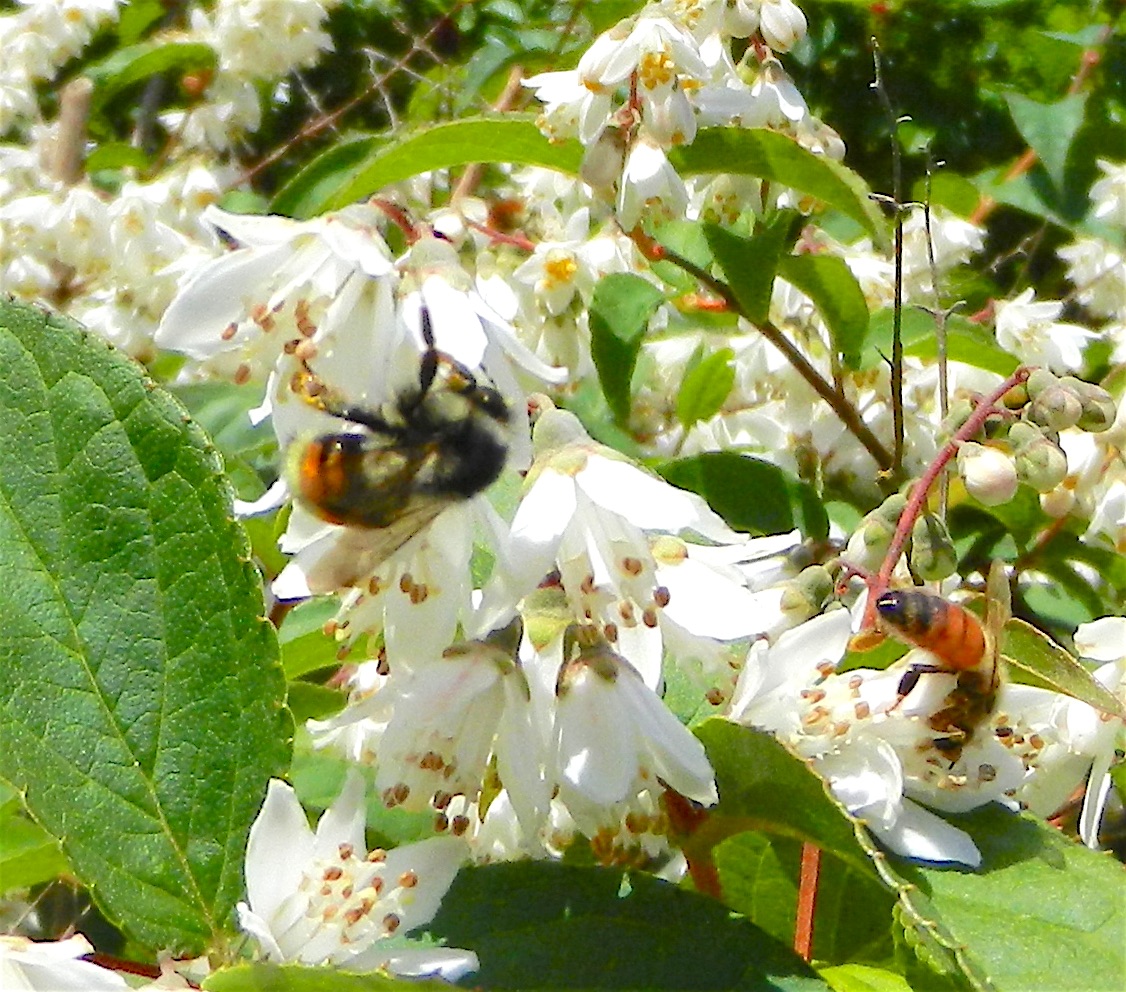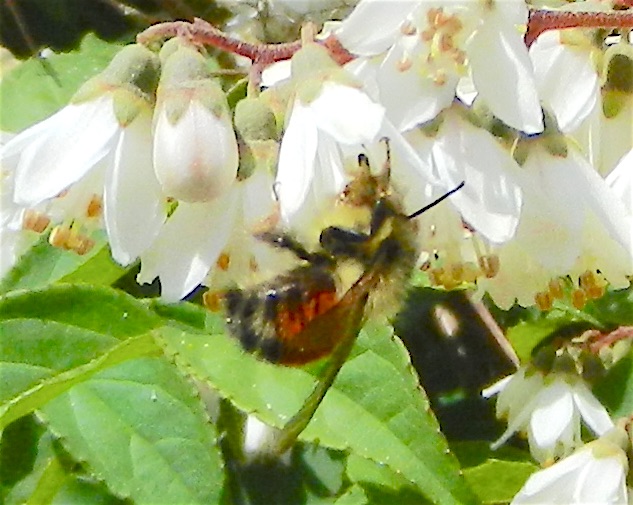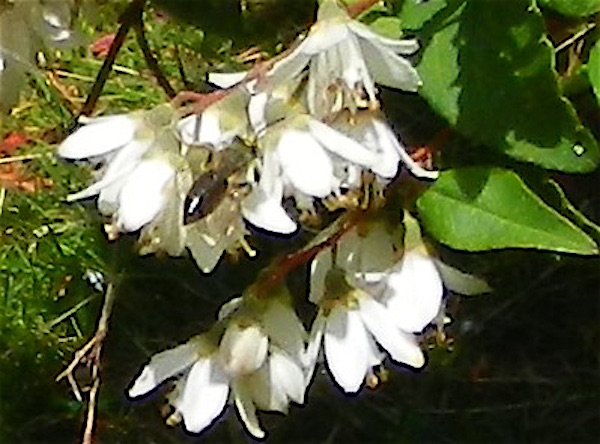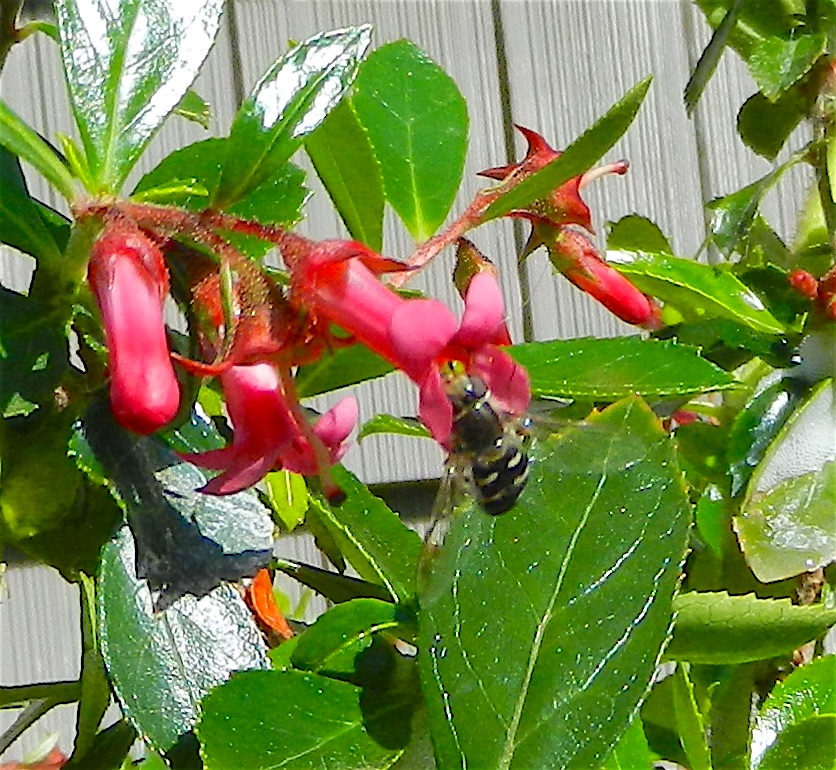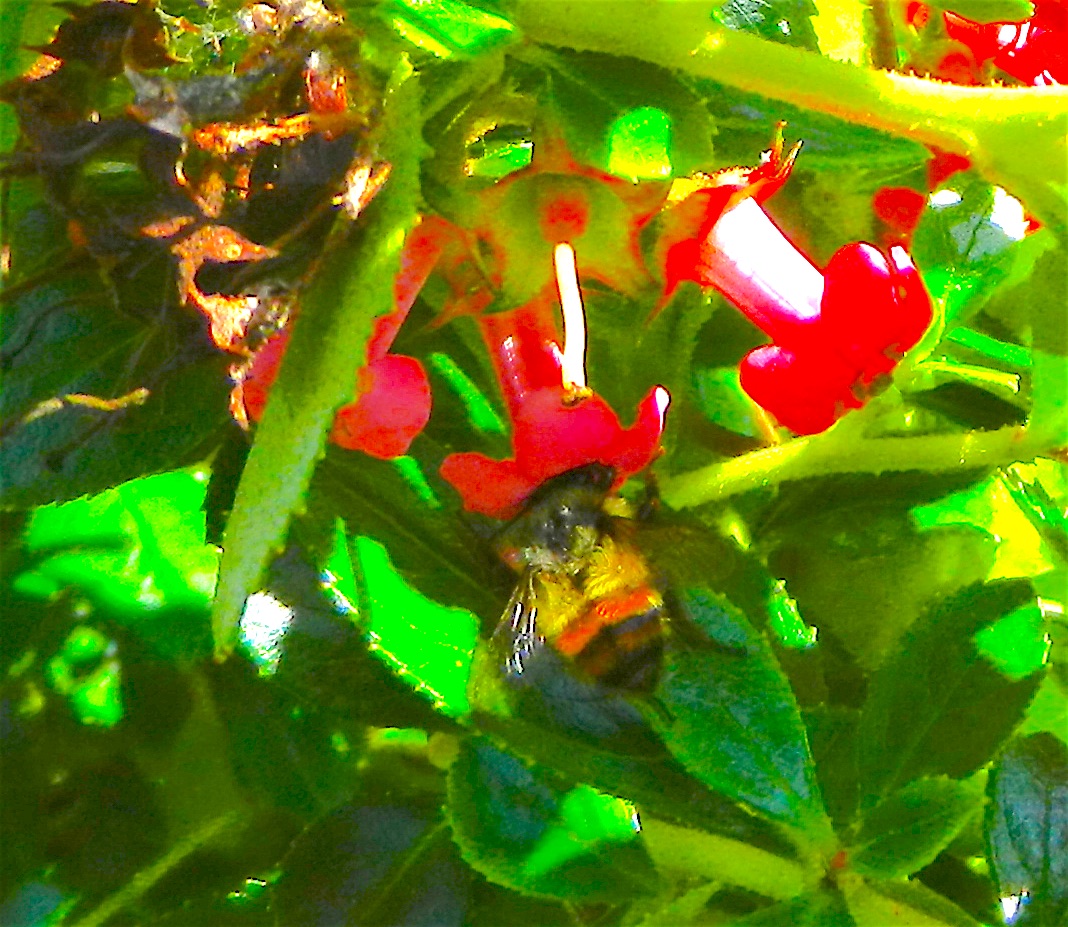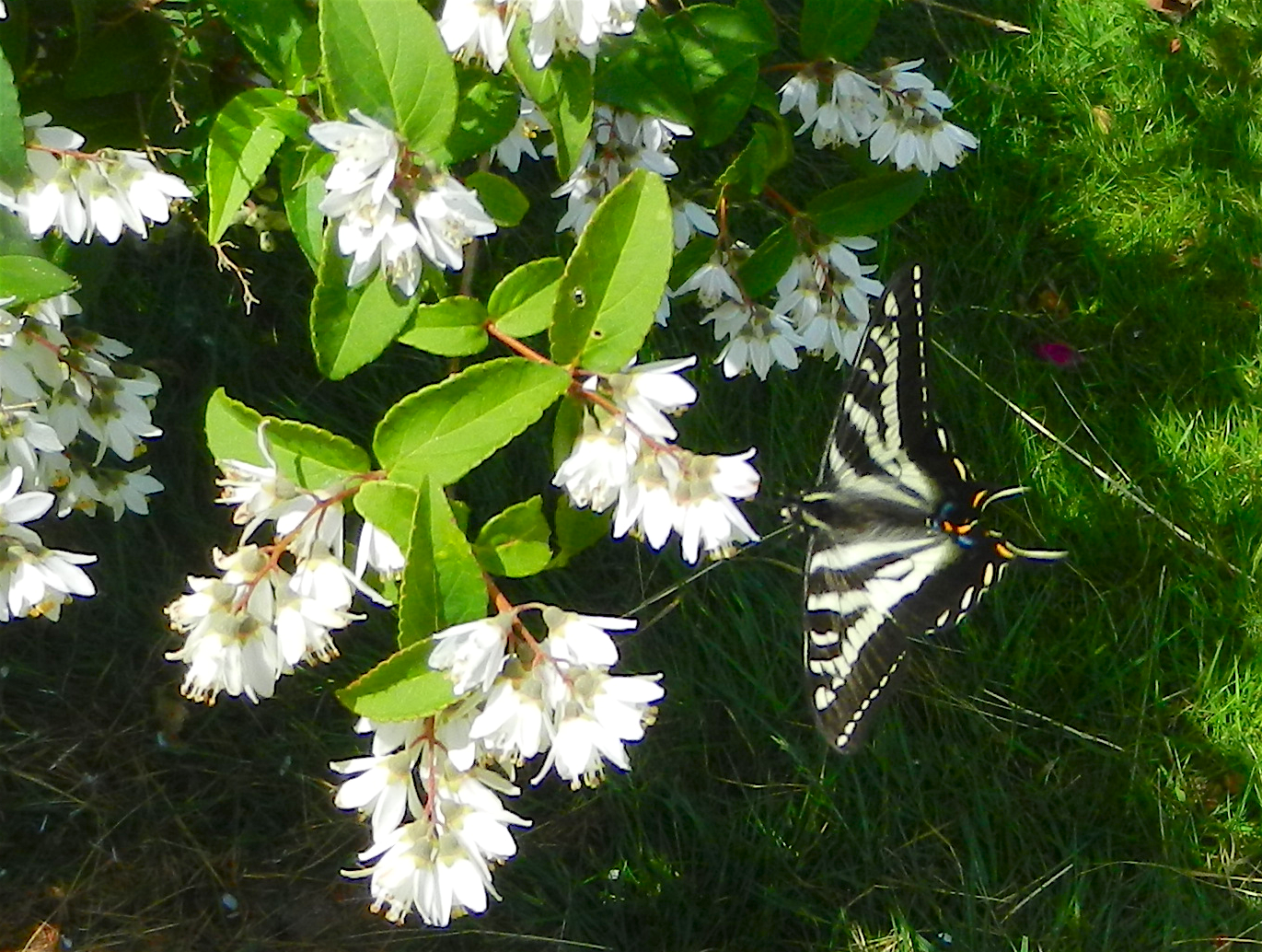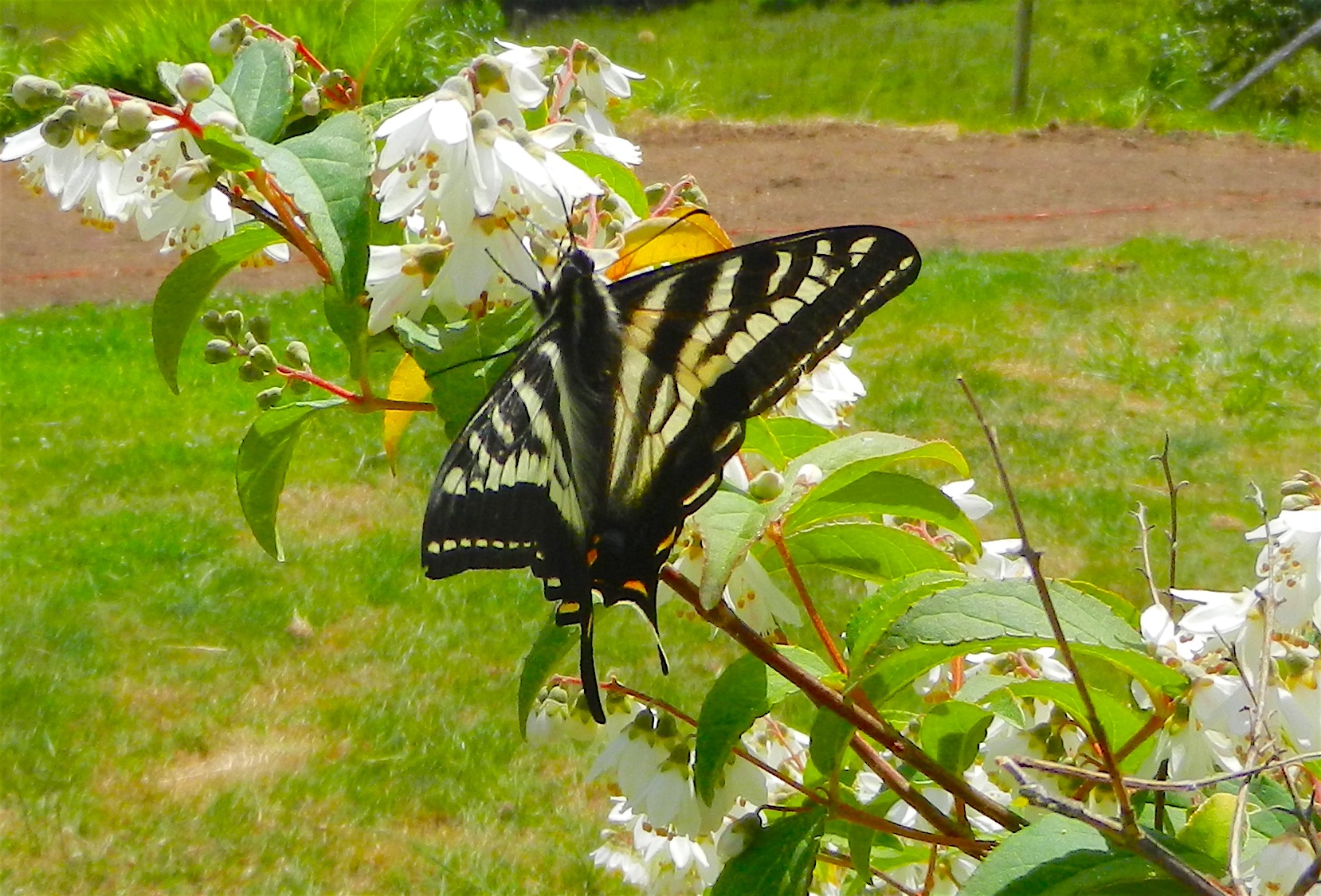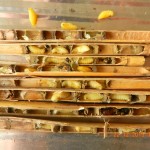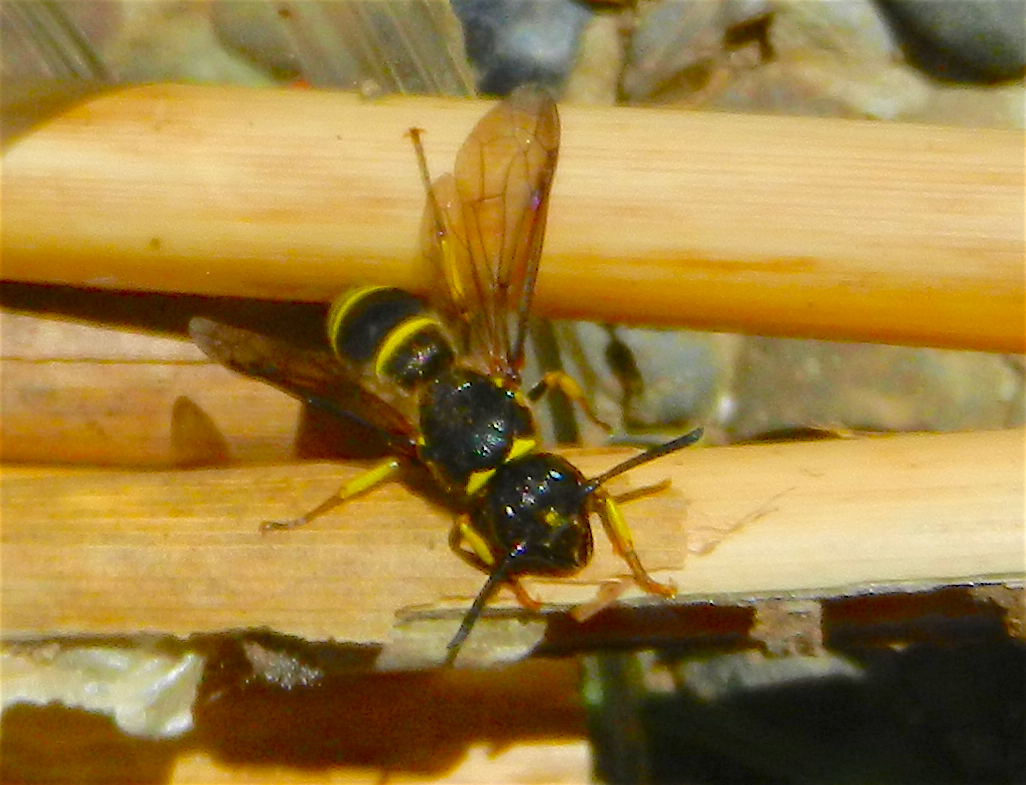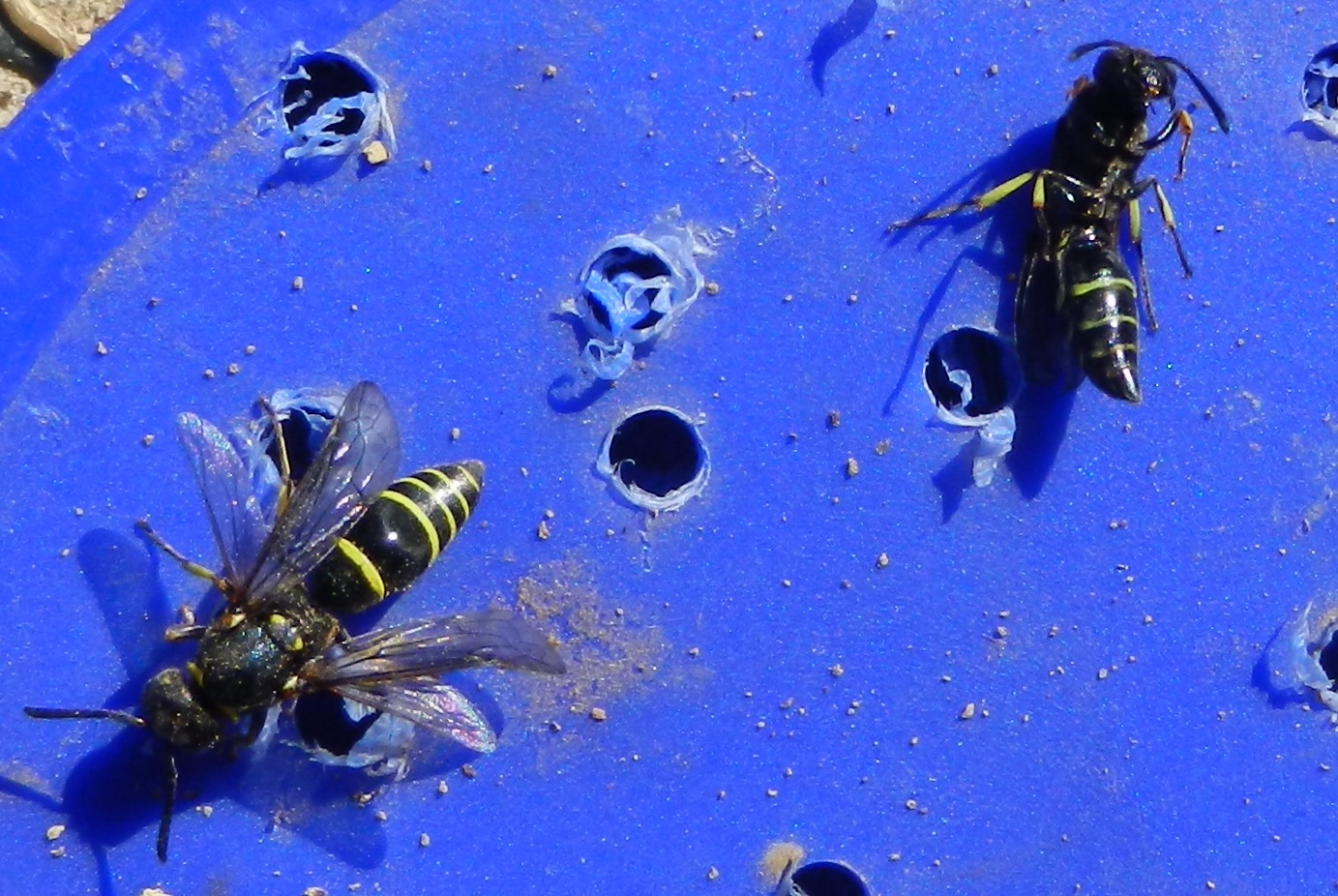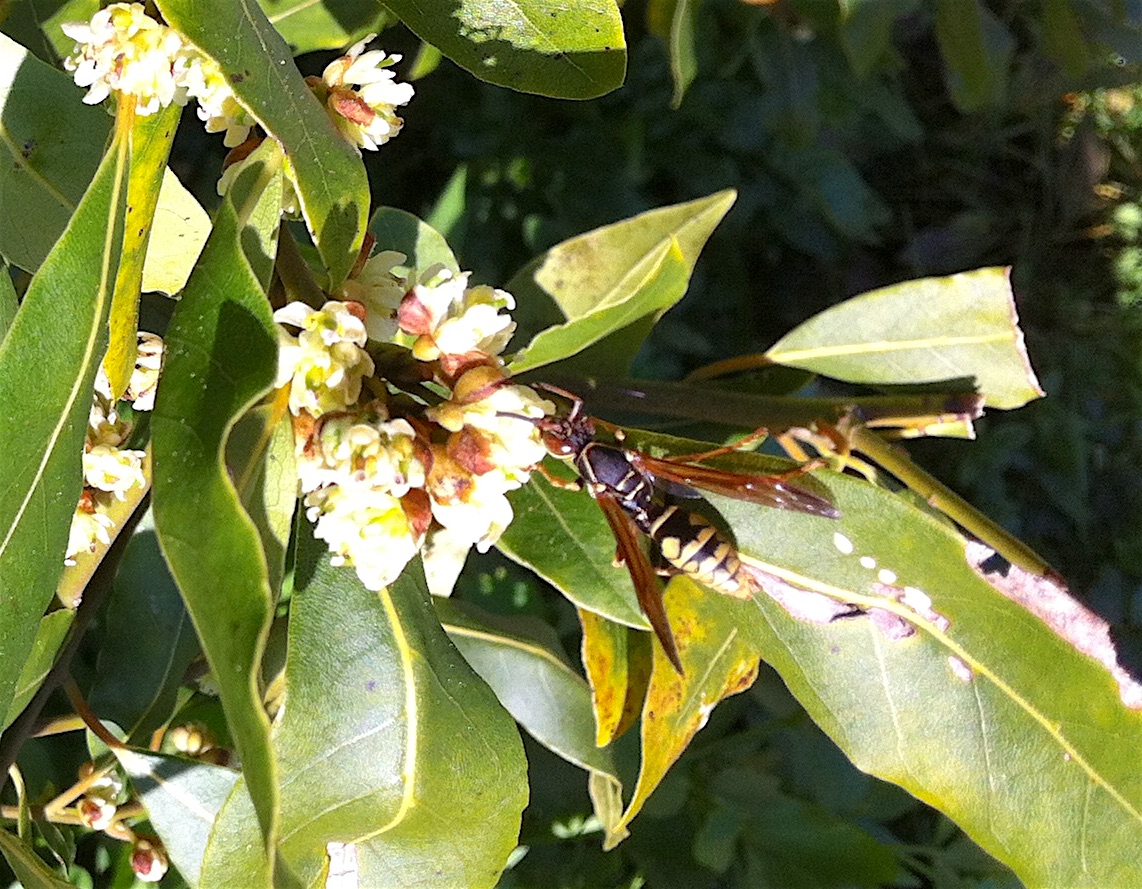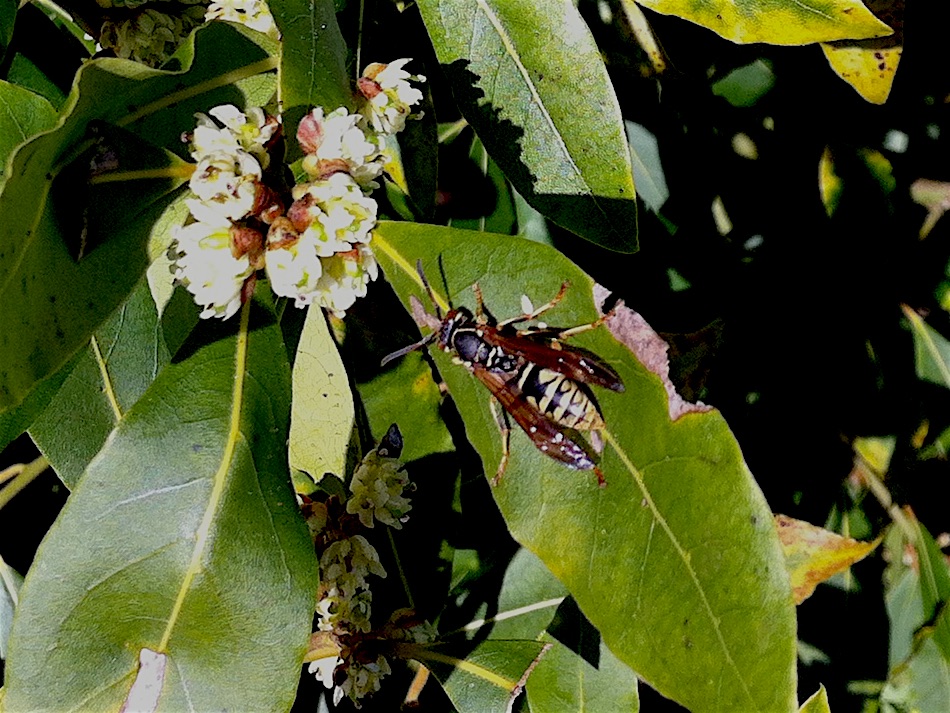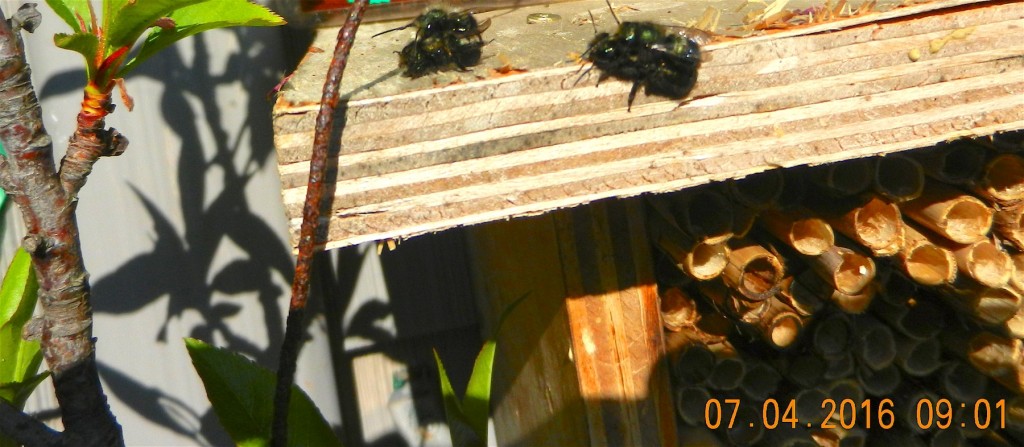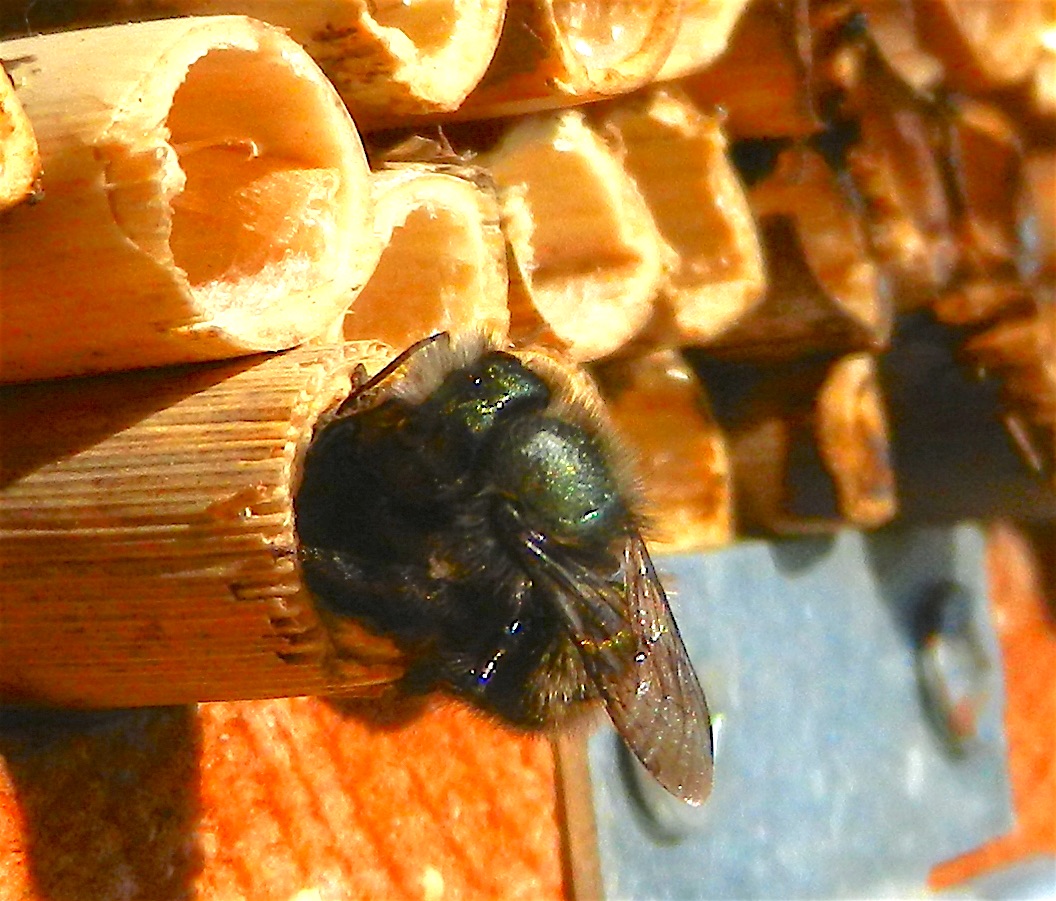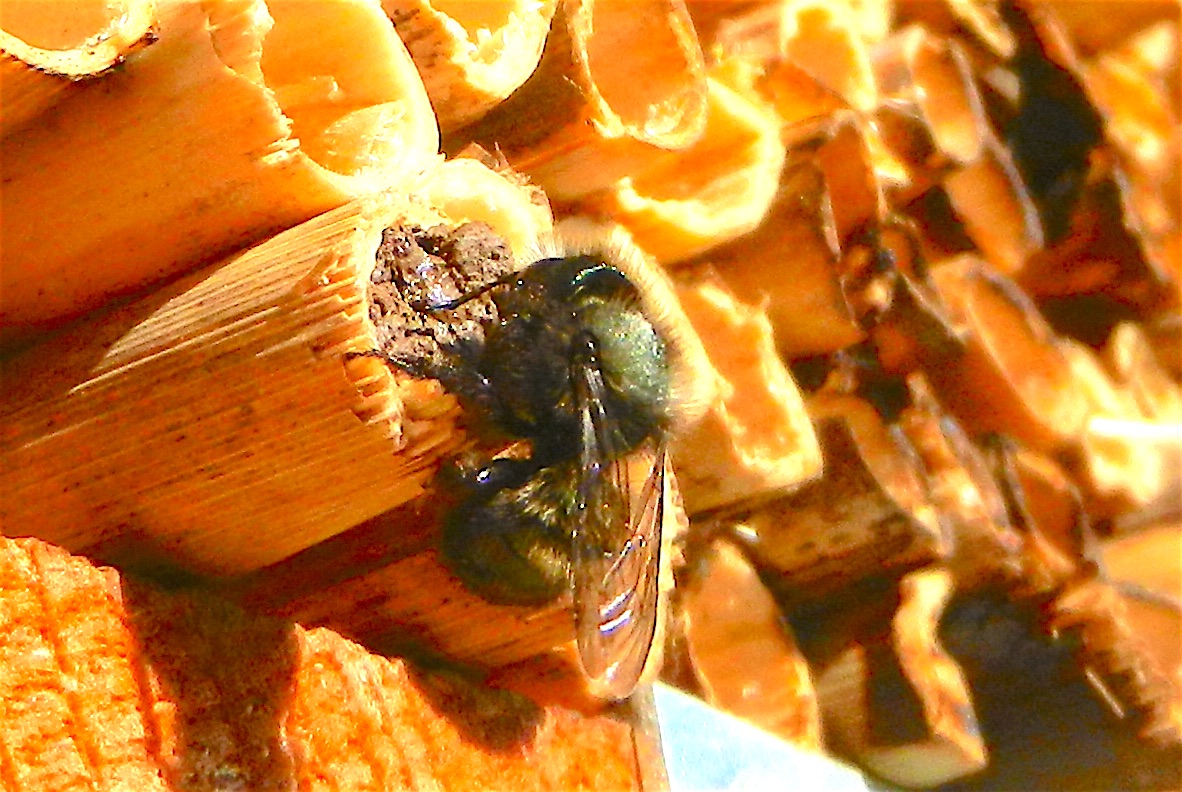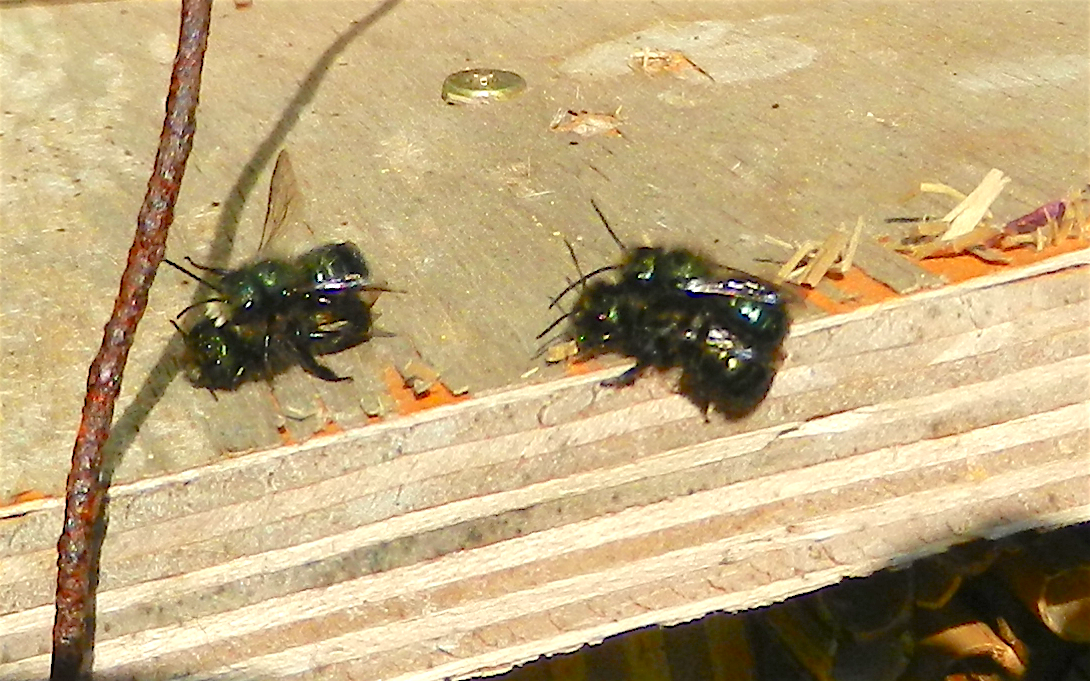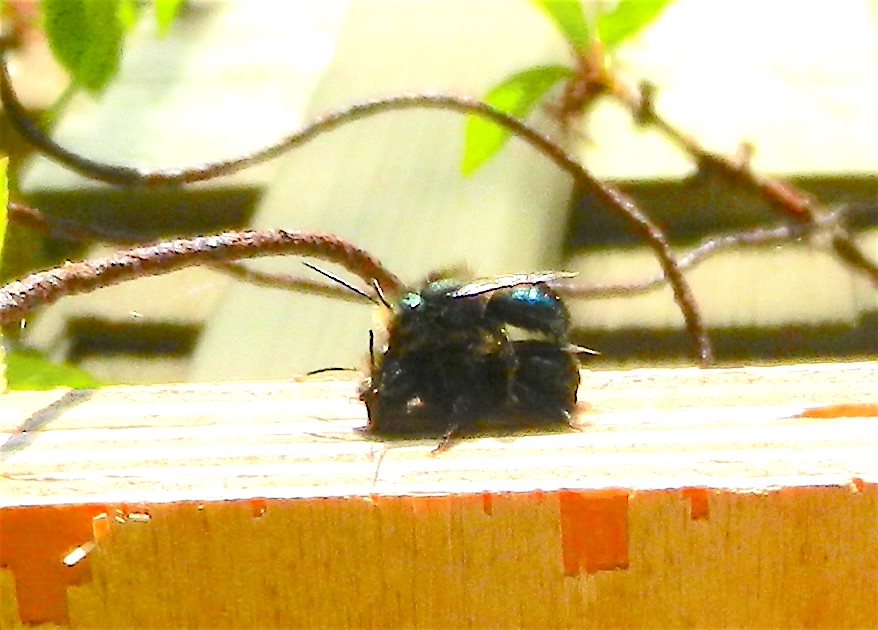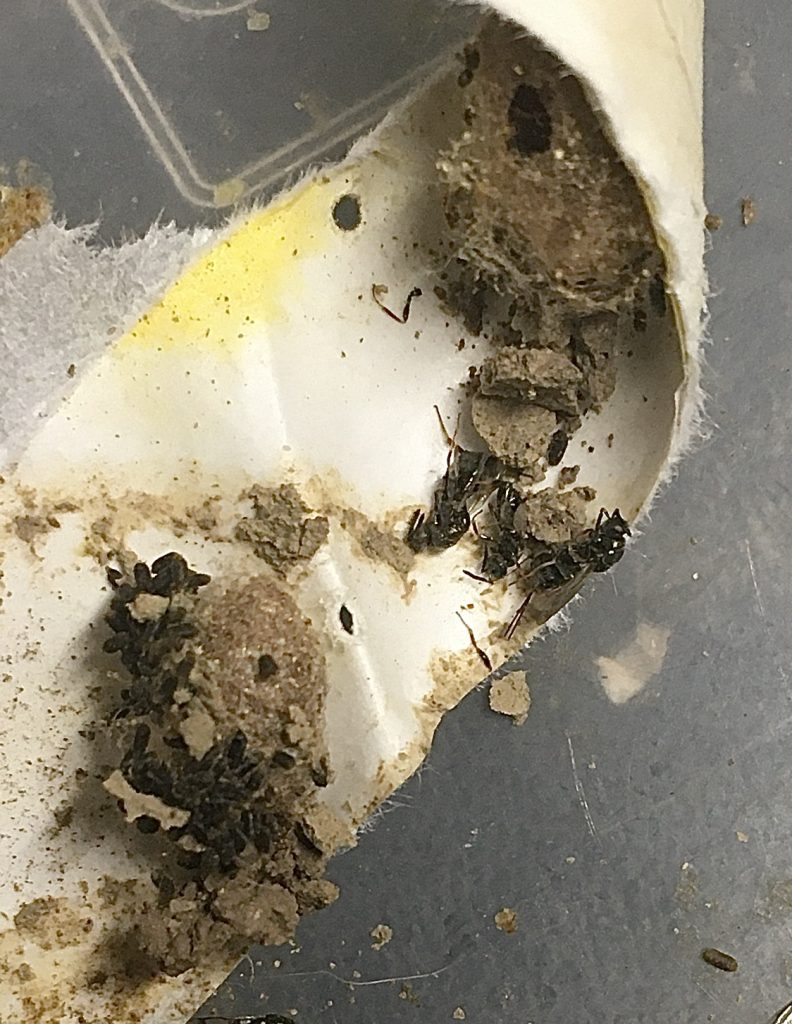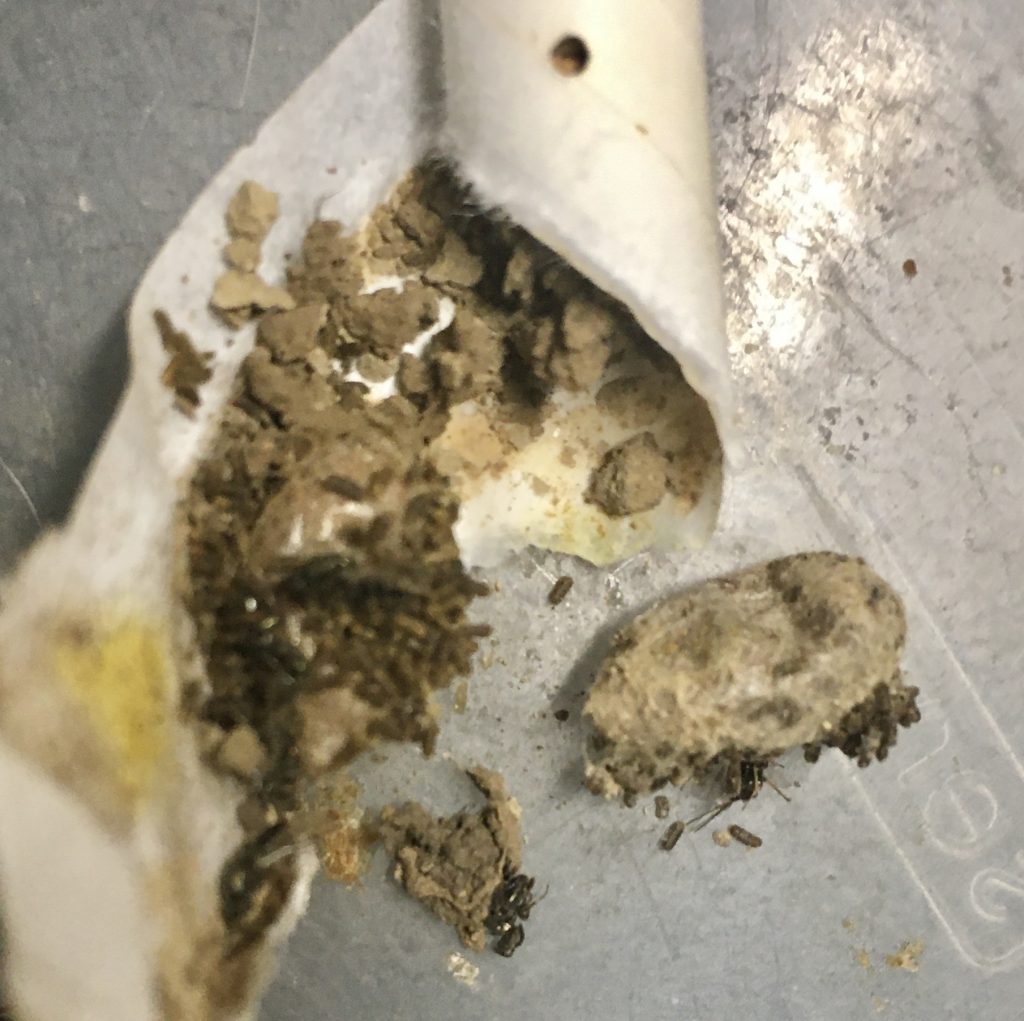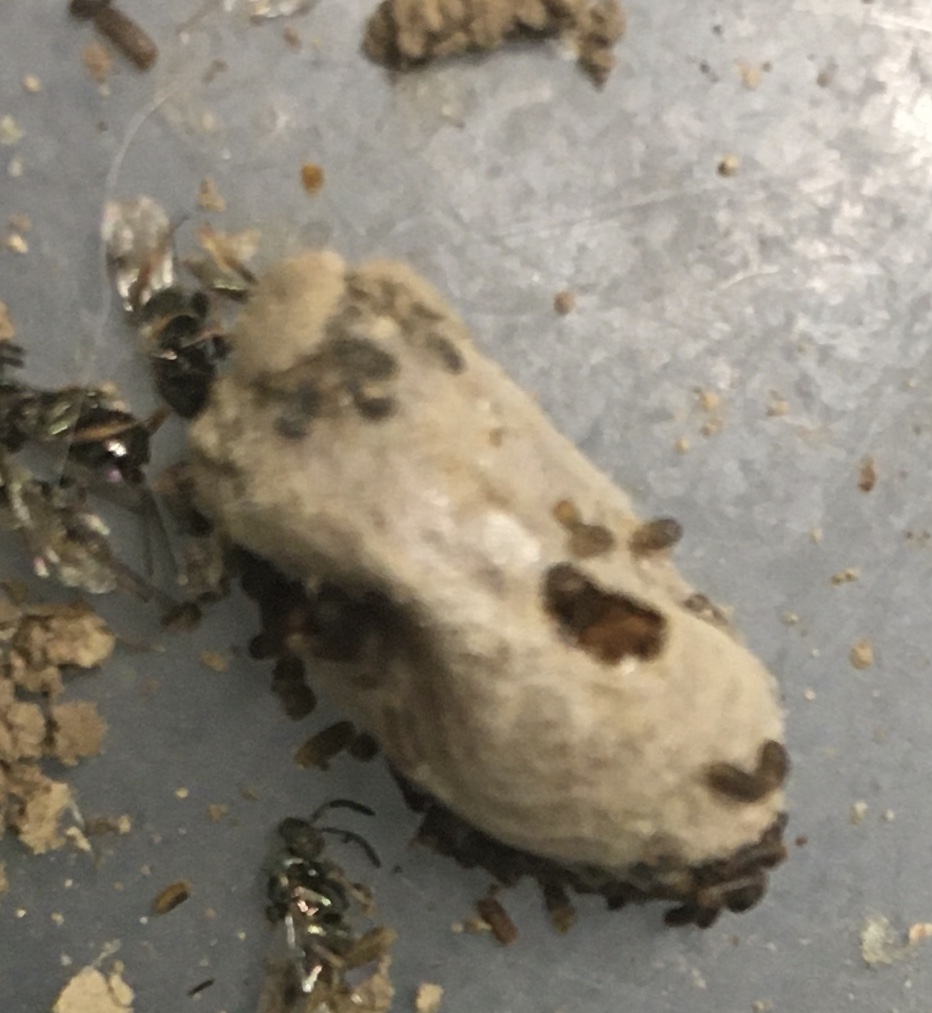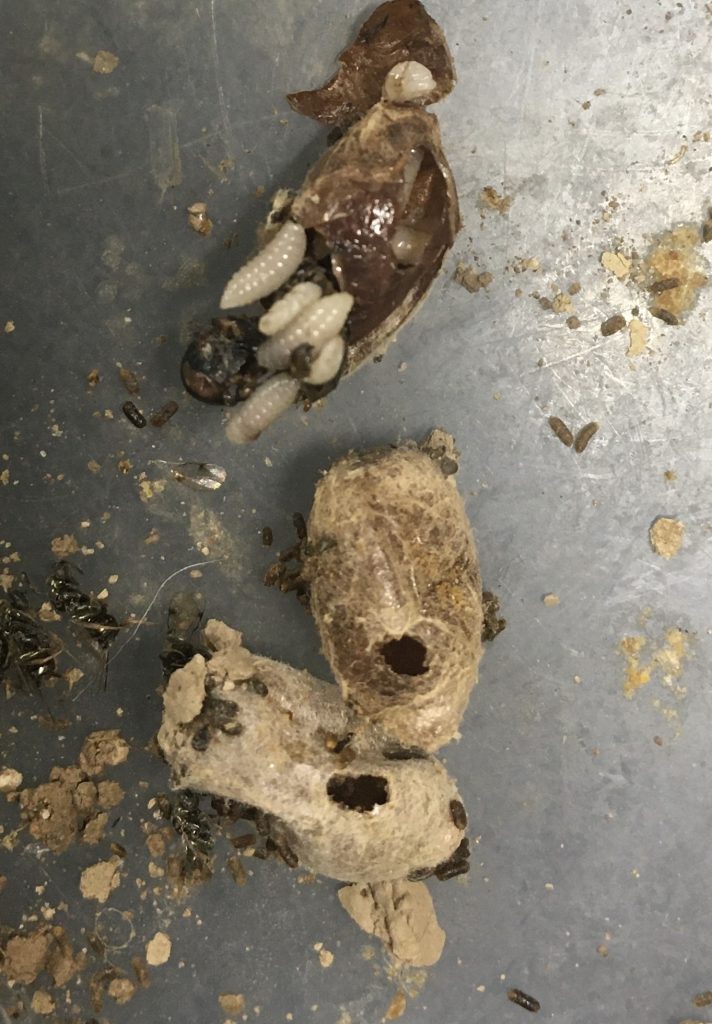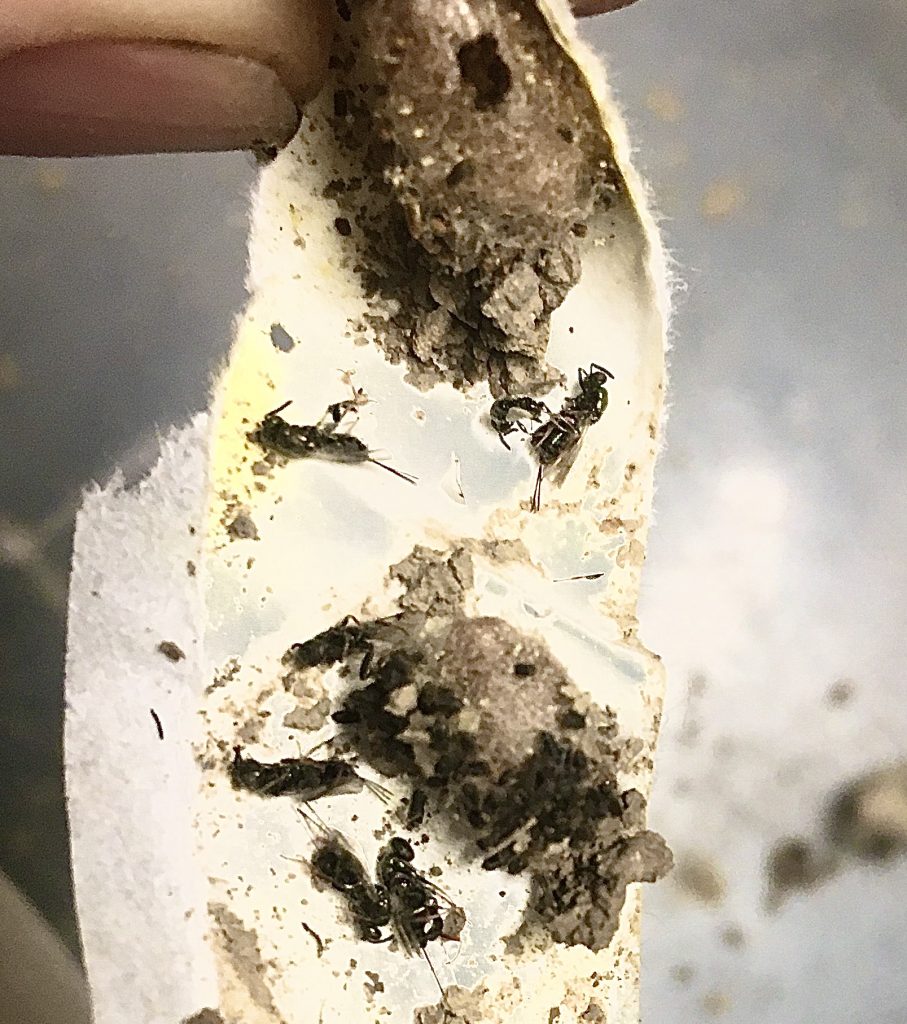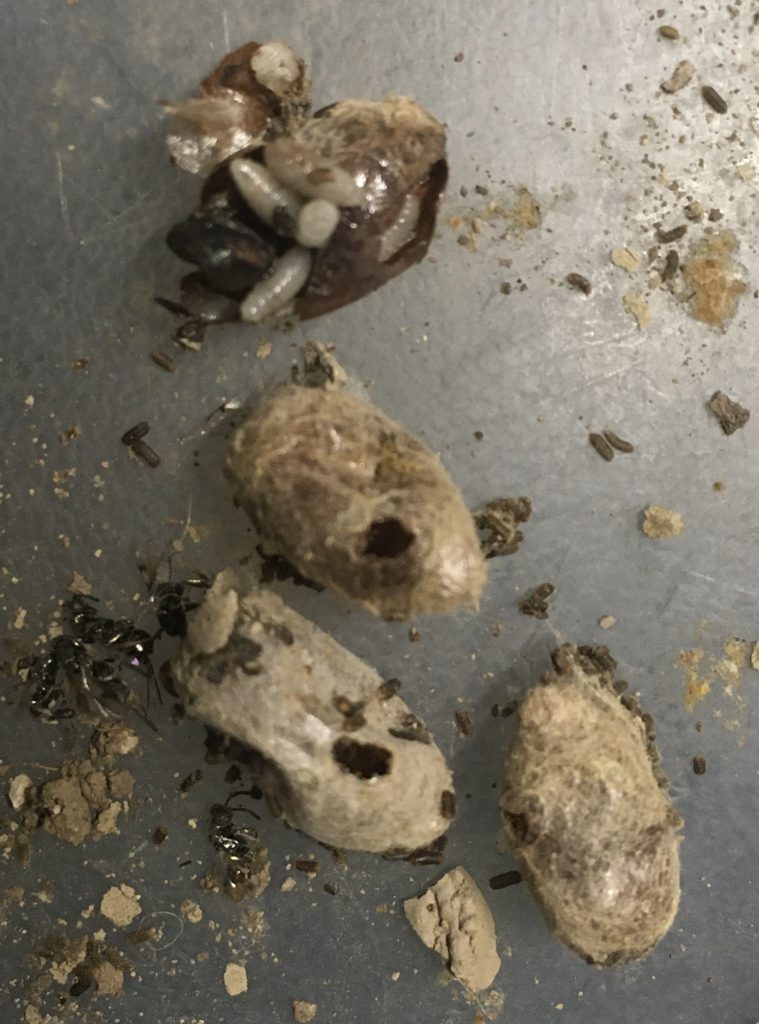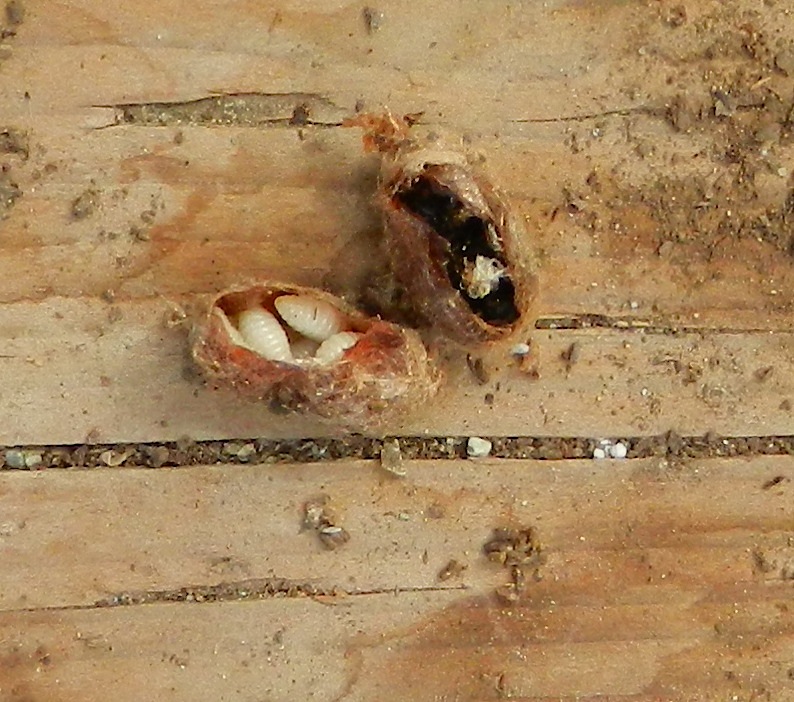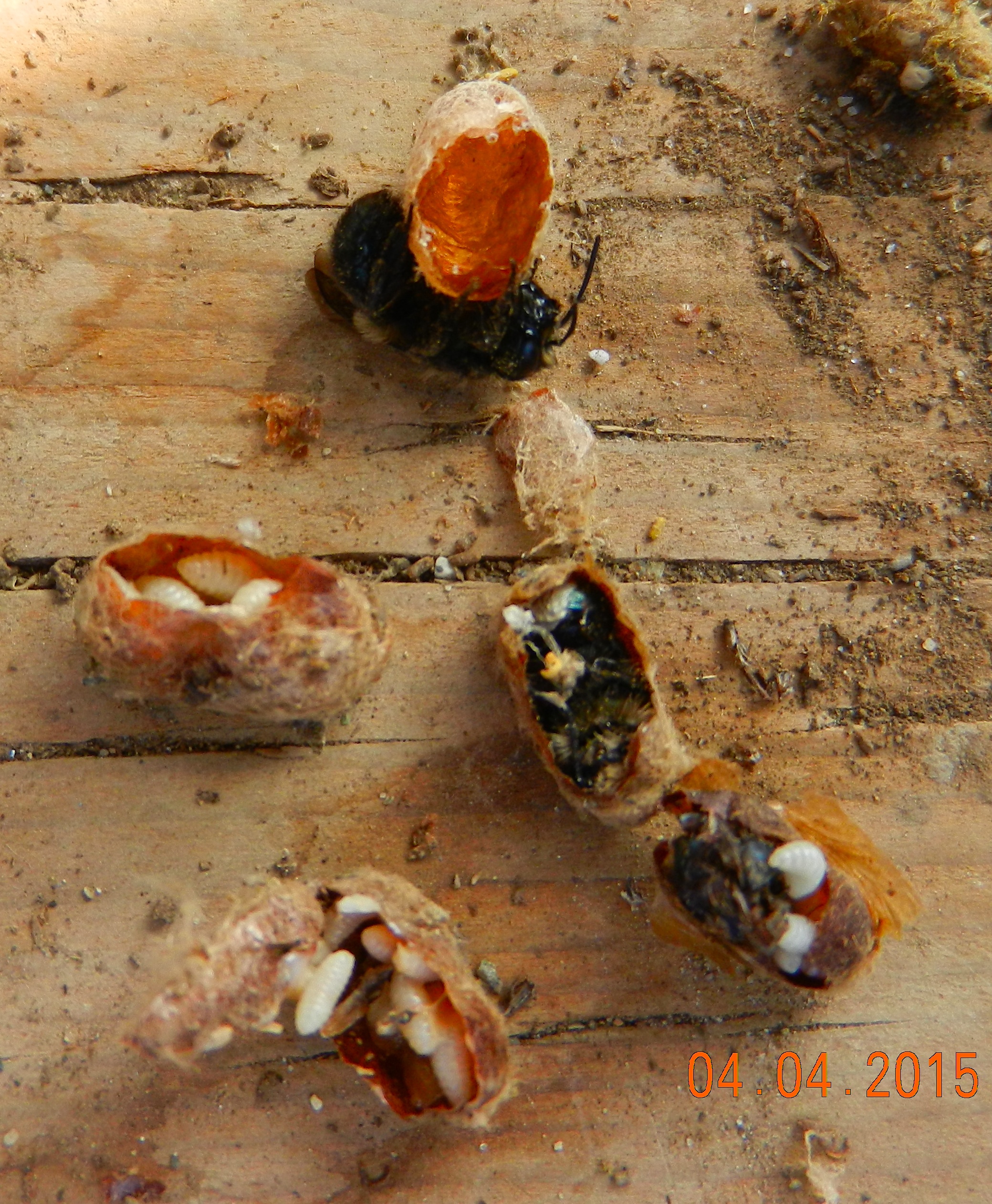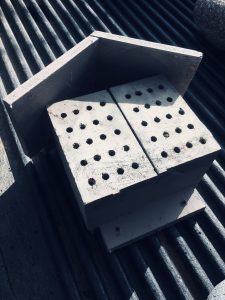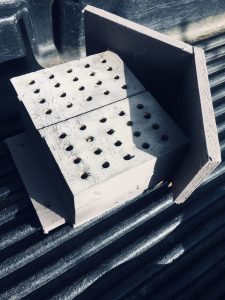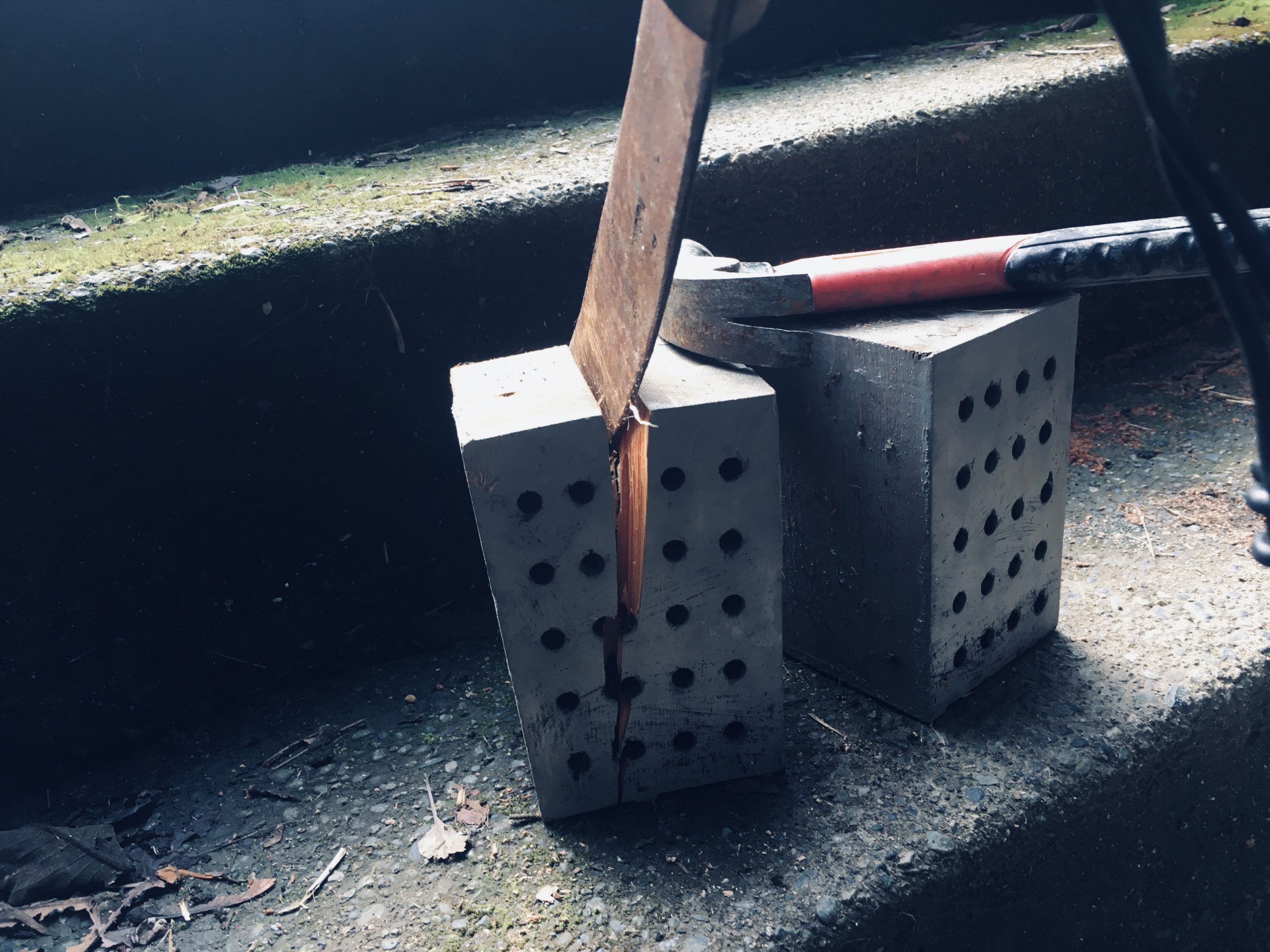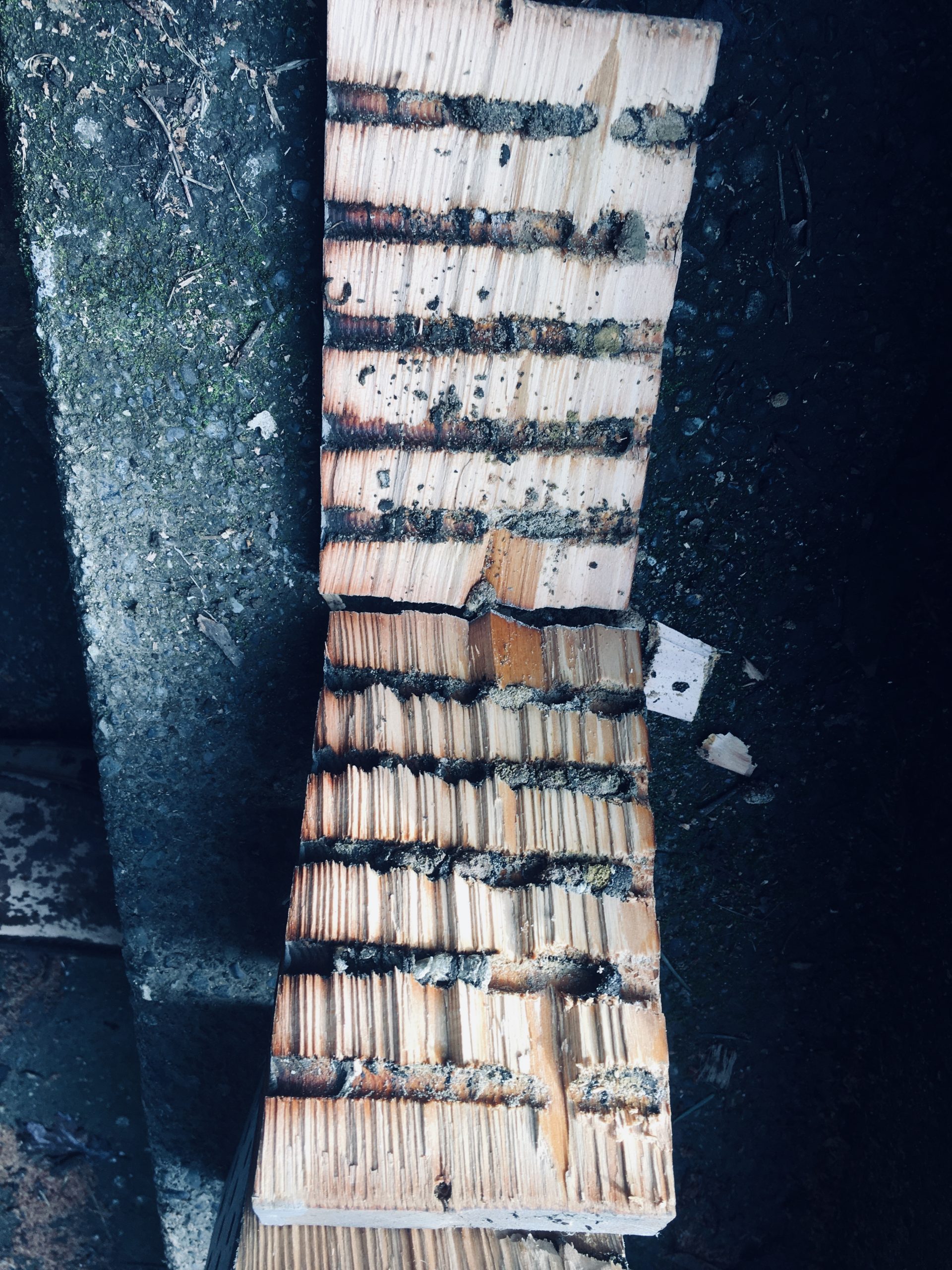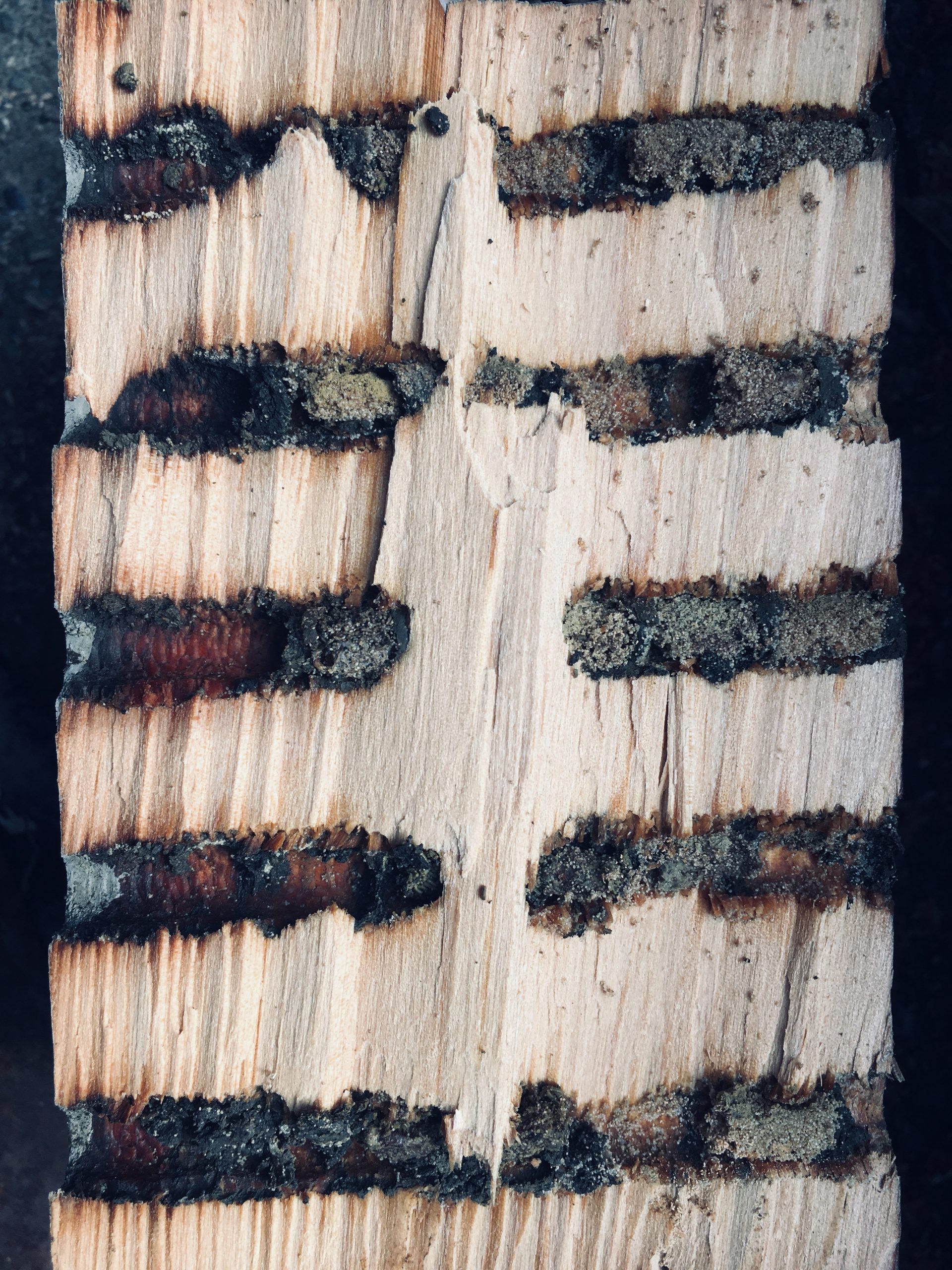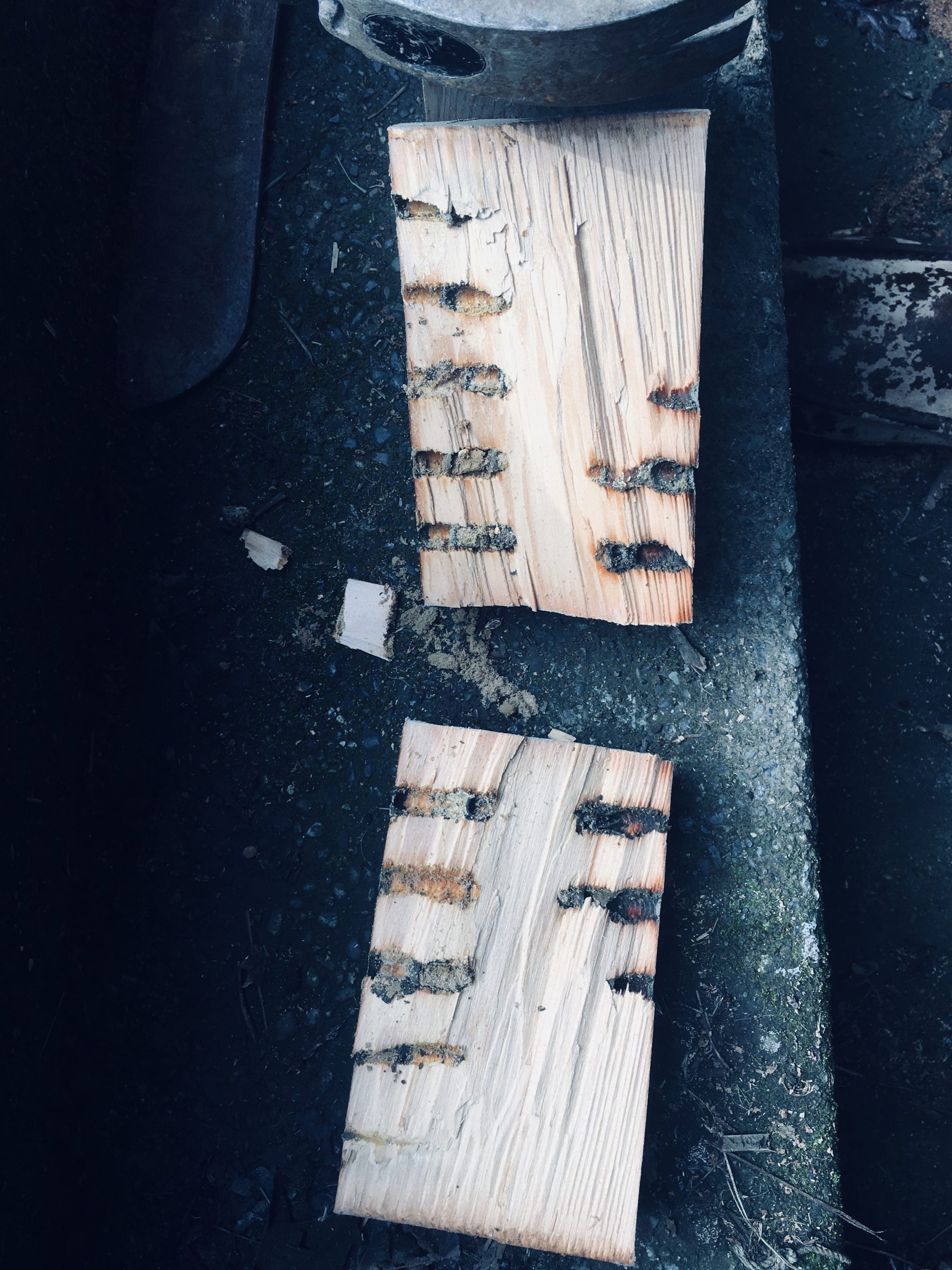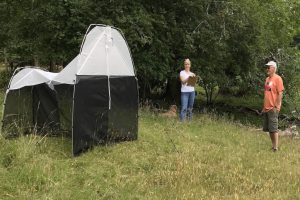ARCHIVAL: This post has been re-dated from 2016 in order to position it closer in the blog to Mason Bee Information
The mason bees have almost stopped their work of pollination by now. However several bumblebee species and honey bees were very active around certain plants in the yard this week.
Category: Insects
Destroy Empty Mason Bee Cocoons several weeks later..
A few weeks after your mason bee cocoons have hatched, remove the empty cocoons and any that have not opened and destroy them. In some of the unopened ones you might find the tiny larva of the parasitic mono wasp, referenced here on an earlier post.
Wasp larvae in mason bee tubes yields newly hatched adults.
When cleaning out the mason bee tubes and recovering cocoons in the winter, I came across several tubes which had been completely colonized by another species of bee/wasp. Images and comments on this can be found in this post:
So now I am trying to get this species identified and will update when I find out. June 6 post shows the identification
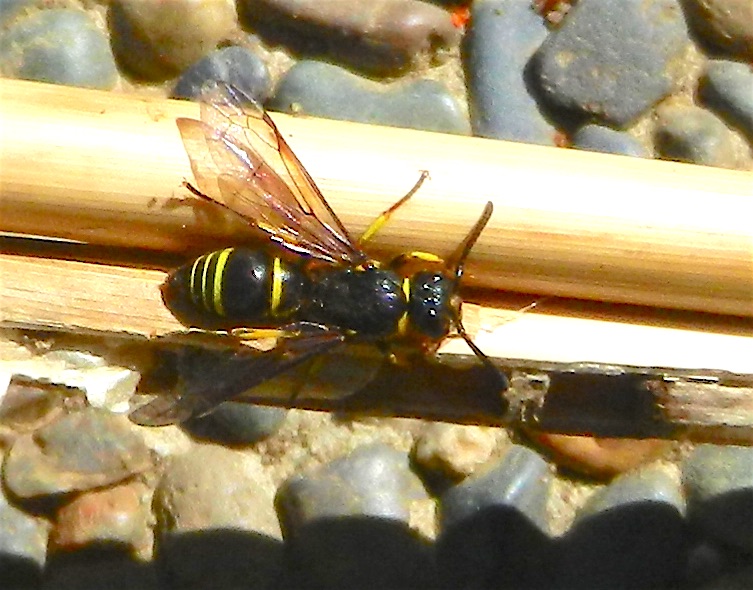
At first I thought these were the paper wasps as they held their wings outspread but the image below of those wasps from the Polistinae family shows a completely different body pattern. Dr. Matthias Buck of the Royal Edmonton Museum is working on samples of these to do DNA sequencing.
Why Cleaning Mason Bee tubes after November is Important
NOTE: I have updated this 2016 post in order to make it appear closer to the other mason bee information
Today I came across two unopened reed tubes which I had forgotten in the refrigerator so the cocoons had not hatched out. The image below shows why it is important to clean your tubes out in the winter and not leave them until late spring.
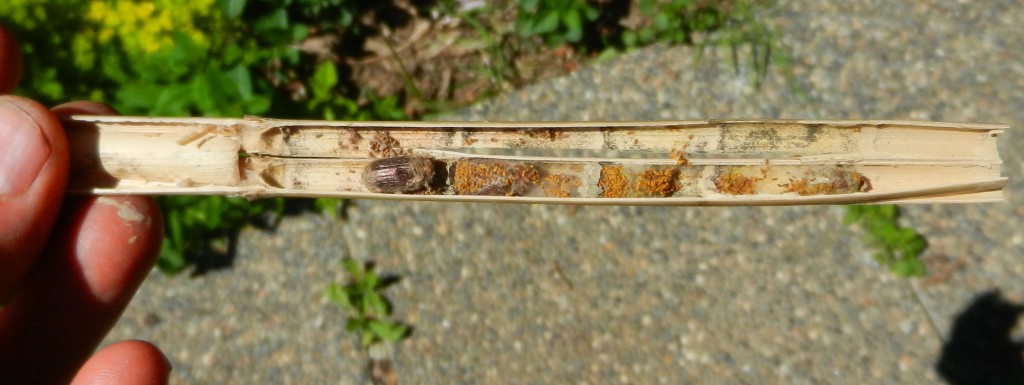
If people leave mason bee homes out unattended from year to year, the parasite population expands . They wouldn’t be so successful in the wild where mason bee nests are more dispersed in holes in wood or under tree bark. . When we provide homes for them however, along with increasing the bee population, we are also multiplying the success of the parasites. So if we are going to encourage bee populations, it is our responsibility to attend to the cocoons in the fall or winter to be sure they are not contaminated with a new generation of mites.
A busy Mason Bee Morning
NOTE: I have updated this 2016 post in order to make it appear closer to the other mason bee information
The warm sun encouraged a lot of activity around the Osmia lignaria boxes today .
Beware of Tubes through which Parasites can Bore
I have experimented for a few years with a kind of plasticized paper tube someone gave to me which were promoted as mason bee home tubes. This year when removing the cocoons from the tubes I noticed small black dots (holes) in two of the tubes which had been mixed in with the phragmites tubes in the nest box . they were suspiciously drilled at very regular intervals, in fact the distance that cocoons are apart.
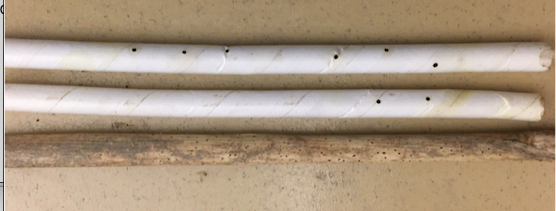
Sure enough, when I opened these tubes, the cocoon which had occupied the spaces beneath the holes did not contain live bees, but instead they were cocoon hulls containing 6-10 live white mono wasp larvae , or hulls with holes and outside of them dead mature mono wasps. Here are a few pictures taken when I was opening the tubes: I had never before seen an example where all cocoons in the same tube had been parasitised like this .
Phragmites reed grass tubes are resistant to the penetration by wasps, so thats one reason they are considered to be superior .
(See https://masonbeesforsale.com/choosing-nesting-materials/) . QUOTE: ” pros: Phragmite Reeds are by far our top choice in nesting materials! They are the best option for several reasons,
1- Size/Shape-Reed tubes naturally vary in size, bees also vary in size and preferences so most bees will find a size they like to nest in. Each tube is cut between nodes so there is a natural back wall. Solitary bees prefer a fully enclosed space to nest in.
2-Protection-They are pest resistant. Mites and parasites aren’t able to burrow through the sides/backs of the tubes.
3-Waterproof– Water will not soften or ruin the tubes. phragmite reeds will naturally wick away moisture. This also decreases the risk of mold, fungus and mildew affecting the bees.
4-Sustainable-Each reed is hand cut to the ideal length (approx. 6inches) from natural sources. Cutting reeds is more environmentally friendly than the burning that usually takes place to get rid of the reeds.
5-Easy Sorting– At the end of the season the reed tubes can easily be split in half. Bees can easily be sorted without damaging the cacoons.
cons:
1- Disposable-Reeds need to be replaced after each season, this requires purchasing new tubes. Luckily they are affordable.
2- Predators– Squirrels and Raccoons are sometimes able to get the tubes out of the bee house if not packed tightly enough. Placing some chicken wire over the front of the bee house and packing the reed tubes tightly in the house will prevent predators from getting your bees. “
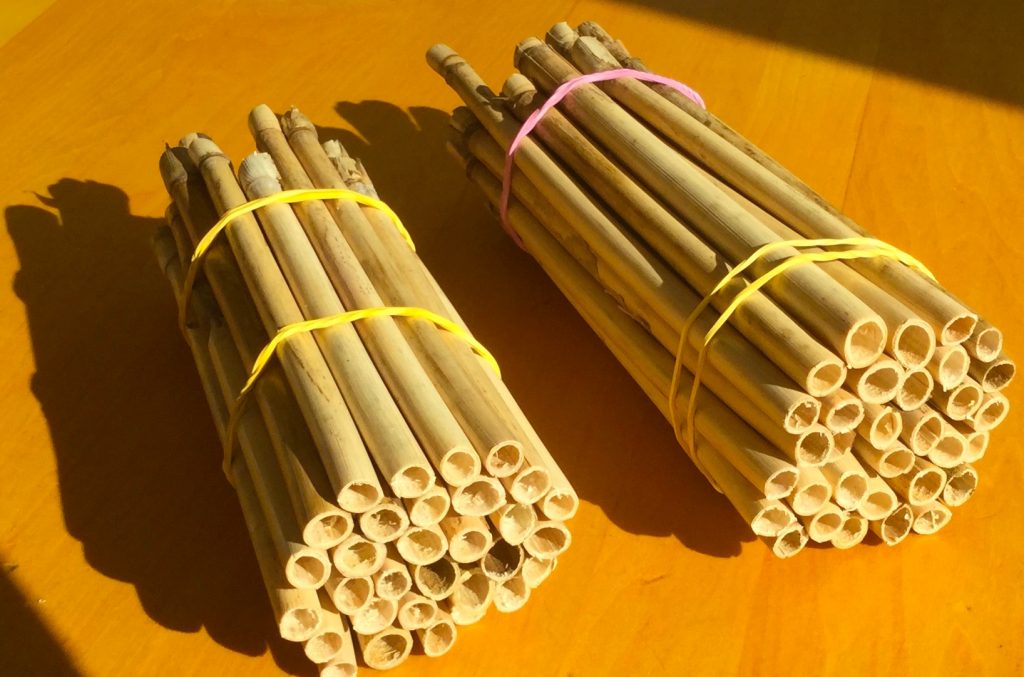
here are some links for various species of parasitic wasp
chalcid wasp predator video: https://www.youtube.com/watch?v=hL6uWSc6rK0
Monodontomerus wasps: Parasites of Mason Bees
ARCHIVAL: This post has been re-dated from 2015 in order to position it closer in the blog to Mason Bee Information
I find that if I remove a set of Mason Bees from the refrigerator and put them out by the colonies to emerge from their cocoons as the weather warms up, if they are not hatched within a week, and yet look like viable cocoons, you can suspect that they may have Monodontomerus wasp parasites,
I opened several cocoons today and the results are shown below. In many of the cocoons the bee was still alive, but must be weakened so that they can’t chew their way out. If I got them soon enough before they were being thoroughly eaten, often with small white eggs attached to the outside which the bee brushes off easily, they can fly away after a few minutes. In the handful of about 100 cocoons that I looked through today, less than 5 % seem to be affected like this.
This external website has a good video on how Monodontomerus wasps attack mason bees.
This external website provides a method of “candling” to check for Monodontomerus parasitic wasp larvae.
Other links on the websites to parasites
Mason Bee Morgue
So that’s what we call them when people drill holes into blocks of wood and then never clean them out. The result is an eventual loss of the colony from an ever increasing infestation of mites.
If you aren’t willing to look after and properly clean your colony every year in the fall, then you are not doing a service to help in pollination, you are harming it.
iNaturalist postings— Garry Fletcher, Metchosin BC
I have been posting my photos of different species I have encountered on the iNaturalist website. Many are species I have found here in the Metchosin Community.
https://www.inaturalist.org/observations?place_id=any&user_id=garryfletcher&verifiable=any
&
Metchosin Biomass Study
The following is from the Goldstream Gazette, March 16, 2021
Metchosin study explores whether local insect populations follow global trends
A 2017 study found a 70 per cent decline in insect biomass over 27-year period in Germany
An entomologist has teamed up with 19 rural Metchosin homeowners to learn more about Greater Victoria’s insect volumes and see if the region’s trends match concerning ones emerging globally.
Neville Winchester, a University of Victoria professor and conservation biologist, receives around half a million flying insects that get collected from Metchosin properties every year. His study started in 2018 and will need about 10 years before he can start identifying the trends of what’s happening to insect biomass here.
“It’s really a biodiversity-driven project,” Winchester said. “Biodiversity is important to maintain ecosystem functioning and provide ecosystem services.”
The project was inspired by a 2017 study that found insect biomass had declined by 75 per cent over a 27-year period in 63 of Germany’s protected natural areas.
READ: Scientists decry death by 1,000 cuts for world’s insects
“We decided, ‘Hey we should start our own project and see if this is happening here in B.C.,’” Winchester said.
Metchosin was picked because of its “intact” natural areas and the interest from residents. Passive flight interception traps are set up to catch and collect flying insects. The citizen scientists then deliver the collections to Winchester every two weeks from May to October. The researcher splits the insects into about seven different groups and weighs the collections.
Winchester is establishing a baseline that will be key to seeing any trends that emerge over time. “Is it declining, is it staying somewhat stable or is it increasing?” he said.
Local insect populations are vital to the food we eat, the researcher said. “If insects started to drop out that were pollinators, who would pollinate food crops? If insects are dropping out, then that is not a good thing, so what are we doing to cause that or are there things we can be doing to reverse that.”
READ: Lack of bees, pollination limiting crop yields across U.S., B.C., study finds
The study is taking variables like weather, elevation and the area’s plant types into account. Winchester says a combination of factors will likely impact the insect population trends.
The professor meets regularly with each homeowner involved to talk about data he’s getting from their properties. Winchester said the Metchosin residents’ enthusiasm for the project means it’ll likely keep going for many years.
“They’re interested in the results and they’re interested in what’s happening on their property and what’s happening, in general in the district,” he said.
Winchester has spent much of his career in the canopies of massive old growth forests around Vancouver Island and the world — researching insect species and their ecological impact. The creatures may be small, but the role they play is not.“I think (people) care about it and they certainly should care about it.”
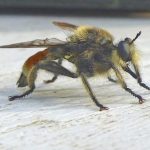 See an earlier story on this https://www.goldstreamgazette.com/news/new-uvic-study-to-track-decline-of-insects-in-metchosin/https://www.goldstreamgazette.com/news/new-uvic-study-to-track-decline-of-insects-in-metchosin/
See an earlier story on this https://www.goldstreamgazette.com/news/new-uvic-study-to-track-decline-of-insects-in-metchosin/https://www.goldstreamgazette.com/news/new-uvic-study-to-track-decline-of-insects-in-metchosin/

